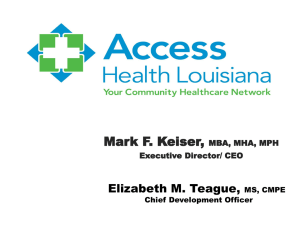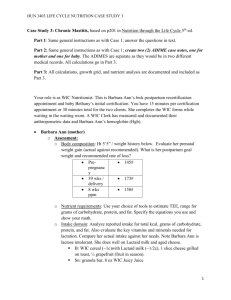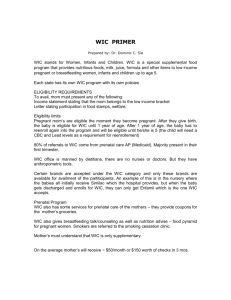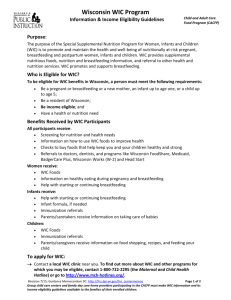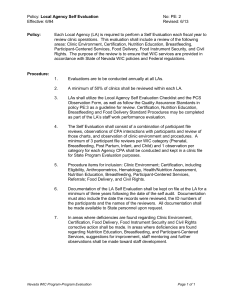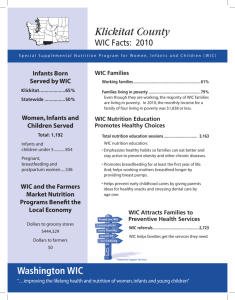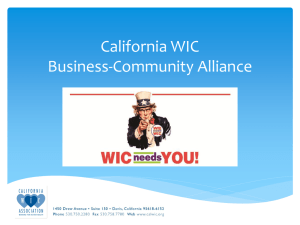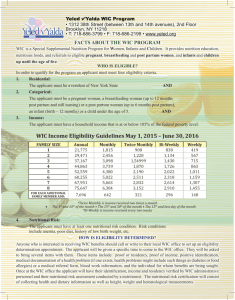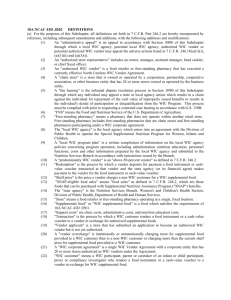FRAC Fact Sheet on WIC
advertisement
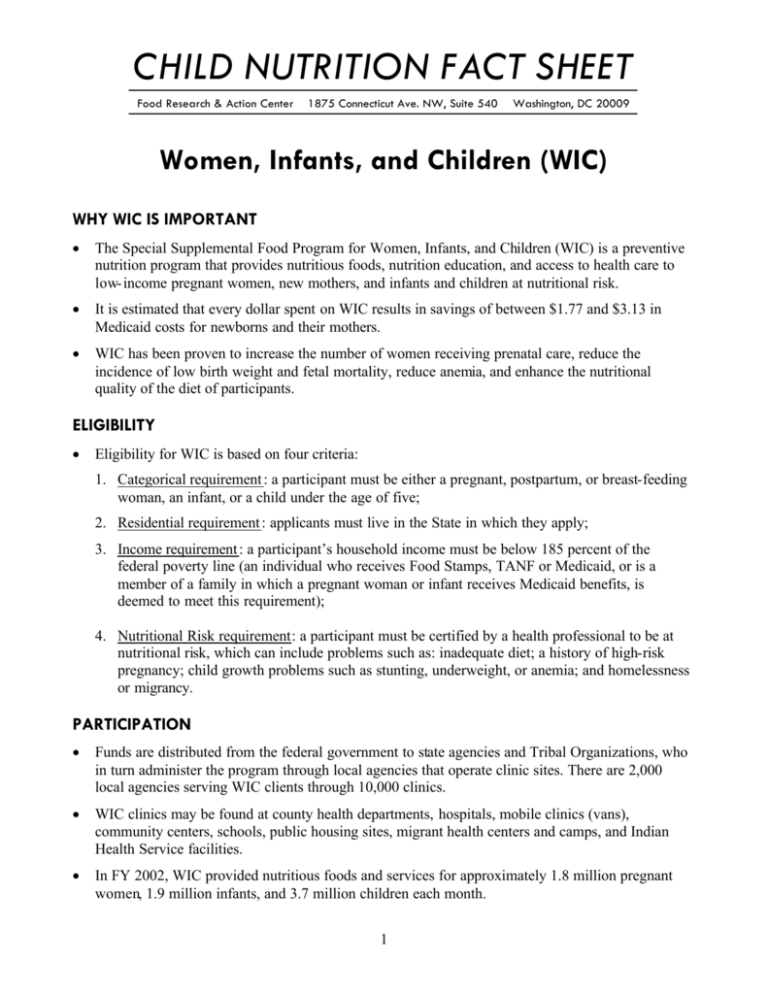
CHILD NUTRITION FACT SHEET Food Research & Action Center 1875 Connecticut Ave. NW, Suite 540 Washington, DC 20009 Women, Infants, and Children (WIC) WHY WIC IS IMPORTANT • The Special Supplemental Food Program for Women, Infants, and Children (WIC) is a preventive nutrition program that provides nutritious foods, nutrition education, and access to health care to low- income pregnant women, new mothers, and infants and children at nutritional risk. • It is estimated that every dollar spent on WIC results in savings of between $1.77 and $3.13 in Medicaid costs for newborns and their mothers. • WIC has been proven to increase the number of women receiving prenatal care, reduce the incidence of low birth weight and fetal mortality, reduce anemia, and enhance the nutritional quality of the diet of participants. ELIGIBILITY • Eligibility for WIC is based on four criteria: 1. Categorical requirement : a participant must be either a pregnant, postpartum, or breast-feeding woman, an infant, or a child under the age of five; 2. Residential requirement : applicants must live in the State in which they apply; 3. Income requirement : a participant’s household income must be below 185 percent of the federal poverty line (an individual who receives Food Stamps, TANF or Medicaid, or is a member of a family in which a pregnant woman or infant receives Medicaid benefits, is deemed to meet this requirement); 4. Nutritional Risk requirement: a participant must be certified by a health professional to be at nutritional risk, which can include problems such as: inadequate diet; a history of high-risk pregnancy; child growth problems such as stunting, underweight, or anemia; and homelessness or migrancy. PARTICIPATION • Funds are distributed from the federal government to state agencies and Tribal Organizations, who in turn administer the program through local agencies that operate clinic sites. There are 2,000 local agencies serving WIC clients through 10,000 clinics. • WIC clinics may be found at county health departments, hospitals, mobile clinics (vans), community centers, schools, public housing sites, migrant health centers and camps, and Indian Health Service facilities. • In FY 2002, WIC provided nutritious foods and services for approximately 1.8 million pregnant women, 1.9 million infants, and 3.7 million children each month. 1 CHILD NUTRITION FACT SHEET Women, Infants, and Children (WIC) BENEFITS • WIC improves the health of nutritionally at-risk women, infants and children. WIC enhances the nutritional quality of the diet of participants through its food package, which is specifically tailored to the special dietary needs of program participants. Nutritious foods included in the food packages include milk, cheese, juice, eggs, iron- fortified cereal, infant formula, and beans, among others. • WIC increases the number of women receiving prenatal care, reduces the incidence of low birth weight and fetal mortality, and reduces anemia. • Participants receive nutrition education, breast- feeding instruction, and counseling at WIC clinics, which helps participants have healthier pregnancies and provide more nutritious diets for their children. • WIC clinics also provide screening and referrals to other health, welfare and social services, all of which can make a tremendous difference in participants’ overall health and well-being. FUNDING • WIC is not an entitlement program. Congress determines federal funding annually. • In fiscal year 2002, Congress appropriated $4.387 billion for WIC, which includes $10 million for the WIC Farmers’ Market Nutrition Program. FOOD RESEARCH & ACTION CENTER (FRAC) 1875 Connecticut Ave., NW, Suite 540 • Washington, DC 20009 TEL (202) 986-2200 • FAX (202) 986-2525 • foodresearch@frac.org • www.frac.org 2


